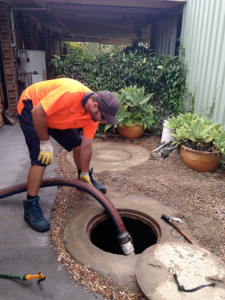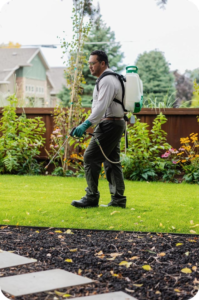A pest control business needs a marketing strategy to attract new customers. It should include tactics like search engine optimization, social media, and content marketing.
Create visually appealing flyers that showcase your services, special promotions, and contact information. Distribute them to local neighborhoods and during community events. Alternatively, you can pass them to real estate agents or include them in welcome packets for new homeowners. Contact Pest Control Marketing now!

One of the most important aspects of pest control marketing is being visible in your community. That means running print advertisements, applying graphics to work vehicles, and participating in local events. These tactics are effective because they make your brand seem more authentic and build local affinity. They also help you stand out from the competition.
One way to do this is by creating a website. A website is a must-have for any modern business because it allows your audience to learn more about your company and how you can help them solve their pest problems. In addition, a well-designed website can boost your SEO and increase traffic.
Another tactic is to use social media. This includes posting eye-catching photos of before-and-after pest treatments and sharing testimonials from past customers. It’s also important to respond to all comments, even negative ones, in a positive manner. This will demonstrate that you are a professional and care about your reputation.
A well-designed email marketing campaign is a great way to reach your target audience. Create an email list and include an opt-in form on your website. This will encourage people to visit your site, which can lead to conversions. In addition, email marketing can be used to drive traffic to your website and social media pages, as well as improve search engine optimization.
In today’s research-obsessed world, consumers often turn to online reviews before choosing a service provider. Getting lots of positive reviews can be an effective pest control marketing strategy that will help you grow your business. You can do this by setting up your Google My Business and Facebook business pages, ensuring that you provide quality fumigation services, and asking your clients to leave reviews. You can then share these reviews on your ads, on your website, and in your social media posts.
Another way to market your pest control business is by sponsoring or volunteering at local fundraisers and workshops. Meeting homeowners and business owners in person can help you build trust and credibility for your brand. Moreover, you can promote your services by offering discounts or giving away swag like tote bags and mugs.
Online Marketing
You’ve worked hard to establish your pest control business, but the phones never seem to ring. You’re worried that you might lose a competitive advantage if you don’t start generating new leads soon. The good news is that implementing effective marketing strategies can help you get your business back on track.
Online marketing is a crucial part of any pest control marketing strategy. Use search engine optimization (SEO) to rank highly in relevant searches and attract qualified customers. The key is to target the right keywords, provide helpful information, and rise in the rankings over time. This is an incredibly effective method for generating leads, and it’s a great way to build your reputation in the local market.
Another effective online marketing strategy is pay-per-click advertising (PPC). This form of advertising allows you to pay for the top results that appear when potential customers search for your services. It’s a quick and scalable option that helps you increase your visibility in the market and generate new leads.
Social media is also a powerful tool for promoting your pest control business. Posting interesting content and interacting with your followers can build trust and brand recognition. It can also help you connect with your audience and identify their needs.
You can use a variety of platforms and techniques to reach your audience, including blogs, video posts, infographics, and more. Be sure to regularly analyze the data from your digital marketing efforts, such as Google Analytics and PPC platforms, and make any necessary adjustments.
To further expand your reach and attract more customers, consider partnering with local businesses that offer complementary services. Partnering with a real estate agency to perform pest inspections before home purchases or collaborating with a gardening center to offer outdoor pest control can improve your brand’s exposure and generate more leads.
Social Media Marketing
Whether you’re in the pest control business or any other service industry, there are many marketing techniques that can help you stand out among your competition. You can use everything from social media to create a referral program to improving your website’s SEO to attract more customers and beat out the competition.
Word-of-mouth is the backbone of any business, but in the age of the internet, it’s just as important to have a well-rounded marketing strategy to get your name out there. Running print advertisements, applying graphics to work vehicles and simply being visible in the community are all effective ways to build your brand and get your name remembered when someone is looking for a local pest control company.
Another great way to get more customers and improve your online presence is to gather positive customer testimonials for your pest control services. This can be done by simply asking satisfied customers to leave reviews on your website, social media platforms or online review sites after their fumigation or other services. You can also implement software tools to allow your technicians to request reviews directly from a mobile app while they’re at the site, so feedback is captured as soon as it’s available.
If you’re looking for new leads and want to grow your pest control business even more, it’s also important to invest in paid online advertising. Popular social media platforms have moved to a pay-to-play model, meaning that unless you’re willing to spend money on ads, your content won’t be seen by the majority of users.
Another effective marketing idea for pest control companies is to focus on your niche market and set yourself apart from the competition. For example, maybe you’re the only company in town that uses a special insecticide that is organic and safe for pets. If you can target your niche market, it’ll be much easier to win more long-term clients and outpace the competition.
Finally, it’s always a good idea to hire a professional marketing consultant if you need some extra help. They can help you create an overall marketing plan that will make your business more successful and help you avoid any costly mistakes. And with remote work becoming more and more common, finding a qualified marketing expert doesn’t have to be as expensive as hiring a full-time employee.
Content Marketing
When it comes to marketing your pest control business, being unique is key to catching customers’ attention. This means thinking outside the box when it comes to promotional materials, including ad campaigns and social media content that set you apart from your competitors.
Your website should be updated frequently with information about your company and the services you offer. Adding videos of your team members in action, before-and-after photos of successful treatments, and testimonials from happy clients are all effective ways to drive traffic to your site and encourage potential customers to call you for help.
Writing informative blog articles and sharing them on social media is a great way to attract more leads and position yourself as an industry expert. For example, Smith’s Pest Management creates how-to guides that educate homeowners on their local pests and how to prevent infestations. The informative and comprehensive nature of these articles ensures that they show up on Google when people search for answers to common questions about pest control.
Other social media content that performs well includes infographics, videos, and podcasts that provide helpful tips for homeowners dealing with pests. Eden at Green Pest Elimination, for instance, regularly shares eco-friendly pest prevention advice on her Facebook page to draw in new followers and establish herself as an authority in the community. She also uses targeted ads on Facebook to reach potential customers in her service area.
Lastly, partnering with lead generation websites to connect with prospective customers is another effective way to grow your customer base. These websites can match you with customers in need of your services, allowing them to contact you directly for an appointment. These platforms are not free to use, but their high customer acquisition rates make them an essential part of any home services marketing strategy.
Getting more customers isn’t easy, but a solid digital marketing plan can put you ahead of your competition and secure recurring revenue for the long haul. With so many home service businesses out there, it’s important to stand out from the crowd with a strong online presence and a marketing campaign that delivers results.








